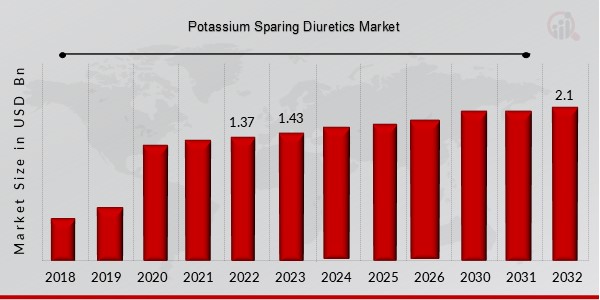These diuretics play a key role in managing fluid retention. But, they do so without excessive potassium loss. This is critical for patients with cardiac conditions. You know how delicate electrolyte balance is. It impacts overall patient well-being.
The Potassium Sparing Diuretics Market was valued at USD 0.1 billion in 2023 and is projected to reach USD 0.18 billion by 2032, growing at a CAGR of 5.68%. The increasing cases of hypertension and heart failure are fueling demand for these medications.

Think about the future of drug delivery. Innovations are on the horizon. We may see more targeted therapies. This means fewer side effects, improved patient outcomes. I'm sure you agree, that's a welcome change.
Potassium-Sparing Diuretics 2025: Benefits and Future Trends
Let's delve into the benefits we anticipate. We expect enhanced safety profiles. This is due to refined drug formulations. Also, we will see better monitoring tools. These tools will help in precise dosage adjustments.
Here's a quick breakdown of potential advancements:
- Improved drug delivery systems.
- Enhanced monitoring of electrolyte levels.
- Greater precision in dosage administration.
- Reduced risk of adverse effects.
- Integration of AI for personalized treatment plans.
Imagine utilizing AI to predict patient responses. This enables tailored diuretic therapy. It optimizes electrolyte balance. That's the future of personalized medicine.
Balancing Electrolytes Safely: Potassium-Sparing Diuretics 2025
Safety is paramount, right? We need to minimize risks. Especially those related to hyperkalemia. We must ensure safe and effective use. This requires careful patient selection and monitoring.
Regulatory changes are also impacting the landscape. We are seeing stricter guidelines. These guidelines are about drug safety. They also address long-term patient care.
Potassium-Sparing Diuretics 2025: Balancing Health in the Coming Year
Patient-centric care is gaining prominence. It's about more than just prescribing medication. It's about holistic health management. We need to consider all aspects of patient well-being.
Consider the role of sustainable practices. Manufacturers are focusing on eco-friendly production. This reduces environmental impact. It aligns with global health initiatives.
Potassium-Sparing Diuretics 2025: The Future of Heart Health Management
Heart health remains a top priority. These diuretics are vital for cardiac patients. They help manage fluid overload. That's crucial in preventing heart failure.
Here’s a comparison of common potassium-sparing diuretics:
| Feature | Amiloride | Spironolactone | Eplerenone |
|---|---|---|---|
| Mechanism | Sodium channel blocker | Aldosterone antagonist | Aldosterone antagonist |
| Primary Use | Hypertension, edema | Heart failure, ascites | Heart failure, hypertension |
| Potassium Effects | Increases | Increases | Increases |
| Side Effects | Hyperkalemia, nausea | Gynecomastia, hyperkalemia | Hyperkalemia, dizziness |
This table shows key differences. It helps in informed clinical decisions. You can choose the best option.
We are seeing a rise in remote patient monitoring. This is for real-time data collection. This data allows for timely intervention. It prevents serious complications.
In conclusion, potassium-sparing diuretics are evolving. They are adapting to meet future healthcare needs. As we move towards 2025, we must embrace innovation. We have to prioritize patient safety. And we need to focus on sustainable practices. These are key for optimal health management.
Related Trending Reports for You-
Perilymph Fistula Treatment Market


No comments:
Post a Comment